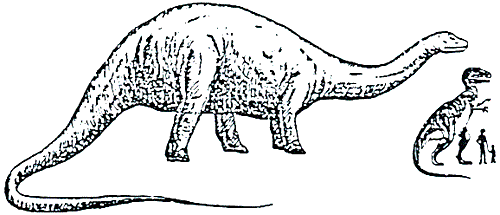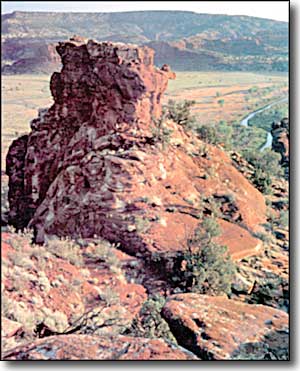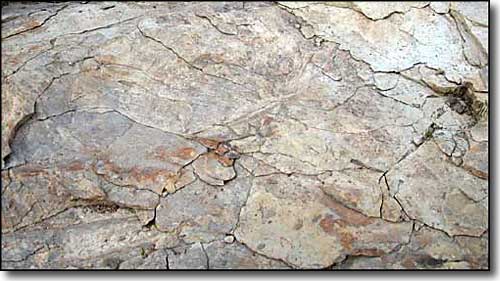
Dinosaur Lake-Picketwire Canyonlands


Purgatoire Canyon
Explore the traces left by Brontosaurus and Allosaurus, left behind as they walked along the muddy shoreline of an ancient shallow lake 150 million years ago. Today visitors to Picketwire Canyonlands can see these footprints in the Morrison rock formation. The Picketwire Canyonlands contain the longest documented dinosaur tracksite in North America. The trackways parallel the Purgatoire River for one quarter mile and contain 1,300 visible dinosaur tracks in four different layers that comprise about 100 different trackways. This site yields more footprints than all other known Morrison tracksites combined, including many that are well preserved.
These 150 million year old layers of strata form part of the Late Jurrasic Morrison Formation which is famous for producing skeletons of Brontosaurus, Stegosaurus and Allosaurus at sites like Dinosaur National Monument. Some folks see the Purgatoire site as the national treasure of dinosaur footprints.
In some layers the tracks are very clear but in others they've been heavily trampled. The impact of large dinosaur activity can be seen in the trampled plant stems and a collection of several dozen clams that were killed by the heavy footfalls of Brontosaurs.
There are a number of pieces of Rock Art (images carved or painted onto stone surfaces) found along the trail in Picketwire Canyonlands. Due to lack of research, little is known of the prehistoric American Indians of this area. Archaeologists think they were a nomadic, hunter-gatherer people whose visits to the area were short as they followed migrating game.
Some of the Rock Art in this area is estimated at 375 to 4500 years old. Further study of the area should yield more information about the artists.
The Dolores Mission and Cemetary was built sometime between 1871 and 1889 when Mexican pioneers first began permanent settlements in the valley. Partial remains of the mission and cemetary are still visible.
The Rourke Ranch, also known as the Wineglass Ranch, was a cattle and horse ranch founded by Eugene Rourke in 1871. Three generations of the Rourke family lived and worked on the ranch ensuring its survival over one hundred years. When the ranch was sold in 1971, it was known throughout southeast Colorado as one of the oldest and most successful local enterprises, expanding from Eugene's original settlement of 40 acres to well over 52,000 acres.

Bulletin Board to Pipe Gate 3.0 miles
Bulletin Board to Purgatoire River 4.0 miles
Bulletin Board to Cemetary 6.7 miles
Bulletin Board to Dinosaur Tracks 8.3 miles
Bulletin Board to Rourke Ranch 11.7 miles
Access is limited to hiking, non-motorized bicycles and horseback. Usage is heavy in spring and fall, moderate in summer and light in winter. The Canyonlands is only open from dawn to dusk and there is no overnight camping.

A palm frond pressed by dinosaur feet molded into a trace fossil
found in sandstone along the river bed.
The Geological Story
What the Tracks Say to Us
Identifying the Track Makers
How to Get There
